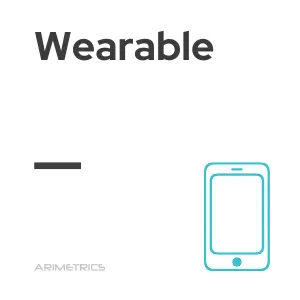
Definition:
A wearable is an electronic device that is used in the human body and that interacts with other devices to transmit or collect some type of data. The clearest and best known example of wearable is smart watches and activity bracelets, but there are many more. The best known are designed to be used with leisure activities and free time, although the use of these accessories is also very valuable in the world of fashion, professional sports, medicine or industry.
This technology originated, in a primary way, in the decade of the 60s but until recent years it has not fully entered society. They are, normally, everyday objects to which technology has been added with the aim of increasing their performance and having integrated the utilities of other devices. One of the characteristics of wearables is that they are always on and / or running.
They are multitasking devices. In addition, they include network functions such as browsing the web, the possibility of connecting to other gadgets, such as mobile phone, and they can even run their own operating system.
Examples of wearables
‘Wearable technology’,as translated by its literal meaning in English, is a sector in constant evolution. In parallel to the development of the ‘Internet of Things‘, new examples of these devices appear constantly, some without success, such as Google Glasses, and others with greater implementation. Here are some types of wearables developed by tech companies:
- Smart watch or smartwatch. Due to their increasingly widespread use, they are the devices that have evolved the most. They allow from receiving email or answering a call to pay in a store thanks to contactlesstechnology.
- Activity bracelets that allow you to control the heart rate, in addition to the intensity of the exercise.
- Sports insoles to monitor the footprint and prevent injuries.
- Body sensors that can monitor body temperature, vital signs, brain activity, or sleep quality level. They are shaped like a tattoo that is placed on the skin, although there are already intracorporal sensors that are placed under the skin electronically.
- Wearables for babies. They are the new baby monitors. In the form of a patuco, sock or device that is placed on the child’s clothes, it can send data such as breathing, temperature, body position or activity level to a mobile phone.
Wearable devices
Wearables have become part of our daily clothing, a perfect complement both to go to work and to play sports. Because of this, the computer is no longer limited to our home and becomes a fundamental object.
In the end, any object we put on can become a wearable technology. If you put an electronic device in a glasses, they would already be a wearable. For example, the glasses that Google took out a long time ago.
Wearable Applications
The applications of Wearable technology are quite diverse. Among them, we can find the following:
Smart glasses
As we said before, the best known example is Google Glass, these smart glasses give us information the information we request through the voice. They have different uses like taking photos and recording videos.
Clothing accessories
Smart bracelets or so-called “smartwatches” are other examples of wearable technology. With them you can control the steps you have taken throughout the day, the calories consumed, the time you have been at rest, the hours of sleep and if you like to swim, you could even count the turns you take or the strokes you do.
Textile in sport
Increasingly, sport and technology contribute to the improvement of the former with the manufacture of smart clothing that best suits the body of athletes or, in the case of runners, illuminates them when they run at night.
Safety at work
In this field is where the use of wearables has deepened the least but there are already devices such as glasses that send gps signals to have located the worker as in the firefighters.
